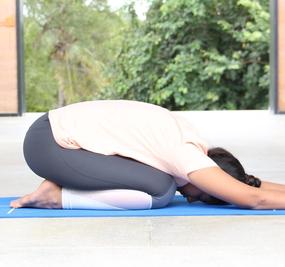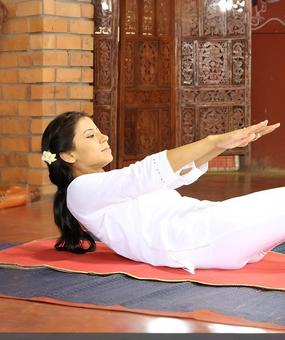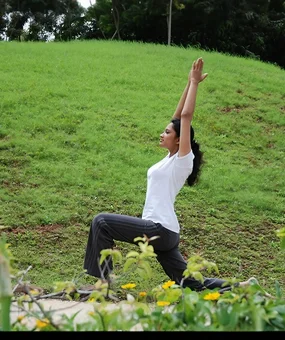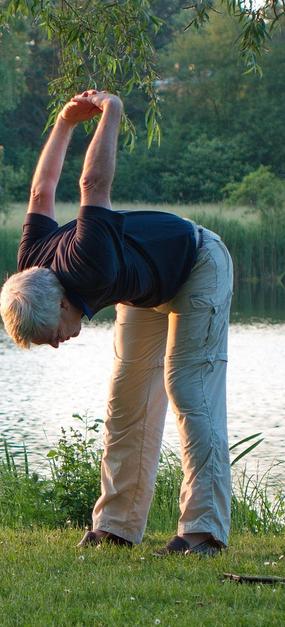Tailbone, or the coccyx, is something you probably didn’t give much thought to. Or perhaps, you thought of it as an unimportant part of the body, given that humans do not have tails. However, research shows that the tailbone is an important weight-bearing support to the body in sitting position. You will agree when you experience pain in the rear, and realize that the simple acts of sitting and standing are not as easy as they used to be but strenuous activities that require forethought!
Here’s what could have happened. You might have strained your tailbone or some of the surrounding muscles or/and ligaments, or there might be inflammation. It isn’t easy to carry on your daily schedule with that nagging pain in the rear region. So let’s find out more about tailbone pain and how you can get relief from it.
Where is the Tailbone?
The last bone in the spinal cord is called a tailbone. Animals can use these bones to move their tail, which helps them attain balance. In humans, these bones are partially fused. Pain in the tailbone is referred to as coccydynia.
What causes Tailbone Pain?
How did you get coccydynia? Here are a few possible causes:
- An injury like fractured bone or falls
- Vaginal childbirth
- Prolonged sitting on hard surfaces
- Degenerative joint changes
- Sciatica
- Improper posture putting undue pressure on the tailbone
- Running on uneven surfaces
Any sort of weight on the tailbone will increase pain, which is why you should change positions often to relieve pressure from the region.
What are the Symptoms of Coccydynia?
Coccydynia is largely a localized pain. You feel pain and tenderness in the seat of the body. It normally doesn’t extend to the legs like sciatica. However, you might find some activities painful like sitting in one position for a long period of time, cycling, and driving. While it is advisable to change positions often, changing positions from sitting to standing might also cause pain. It could even affect your bowel movements given the proximity of the tailbone to the excretory organs.
What should you do to get Relief from Tailbone Pain?
Once you have assessed your symptoms, you might want to get yourself checked by a healthcare professional. While medication can help ease pain, a more long-term solution would be yoga asanas for relief from tailbone pain. With its simple stretches and bends, it exercises your back and tail region making you fit and flexible.
Let’s see which yoga asanas can help prevent tailbone pain.
Yoga Asanas for Tailbone Pain Relief
Yoga can help strengthen the back and hips, making them strong enough to bear the weight of your body. Thus, the tail doesn’t have undue pressure put on it. More often than not, weakness in one part of the body leads to pain in another part. So, yoga helps to strengthen the parts surrounding the tailbone as well as the tailbone itself.
1. Shishuasana (Child Pose)
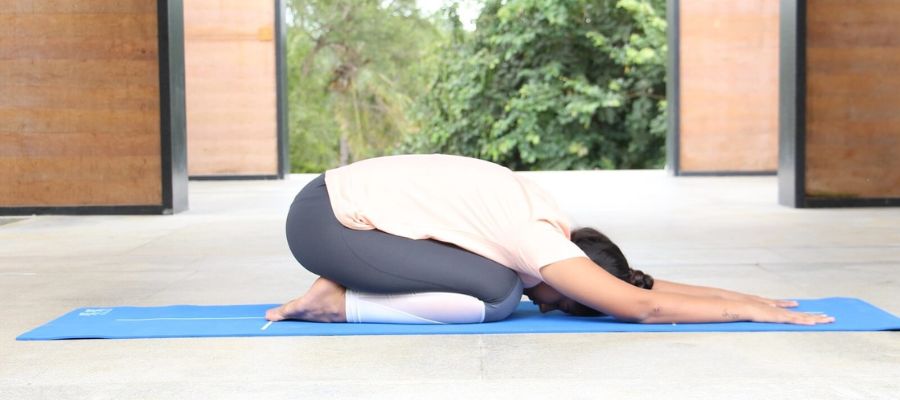
Benefits of Shishuasana:
- Opens and stretches the hips, back, and thighs, which relieves pain in the tailbone
- Relaxes the spine, easing tense muscles there
Aim: Stretch your hands forward as much as you can and maintain the pose for about 5-10 seconds, or as you find comfortable.
Tip: You can start from Marjariasana (Cat Stretch) and move the rear region backward if that is more convenient for you at this time.
2. Dhanurasana (Bow Pose)
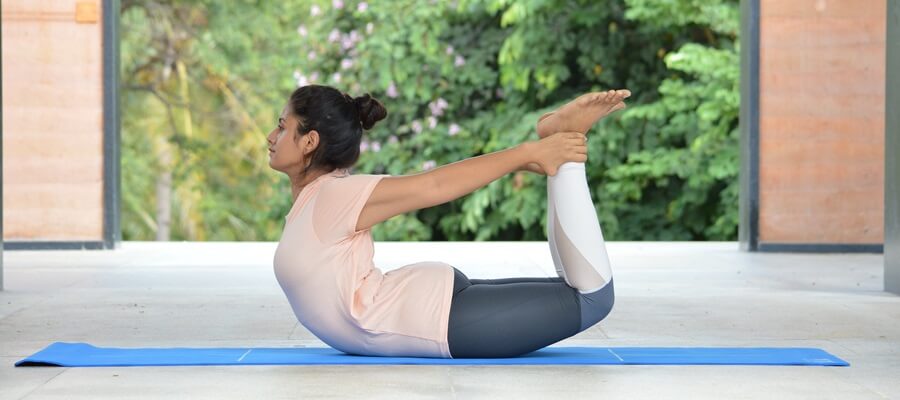
Benefits:
- Strengthens and flexes the back muscles
- Opens the hip muscles, making them more supple providing better support to the tailbone
- Tones and strengthens the leg muscles, making them better able to support body weight
Aim to do Dhanurasana : Maintain the pose for as long as you are comfortable.
Tip: If lifting your thighs and legs off the ground is uncomfortable, avoid it; just hold on to your ankles. With time and practice, when your body becomes stronger and more flexible, you can try to achieve the posture and maintain it for a longer time.
3. Bhujangasana (Cobra Pose)
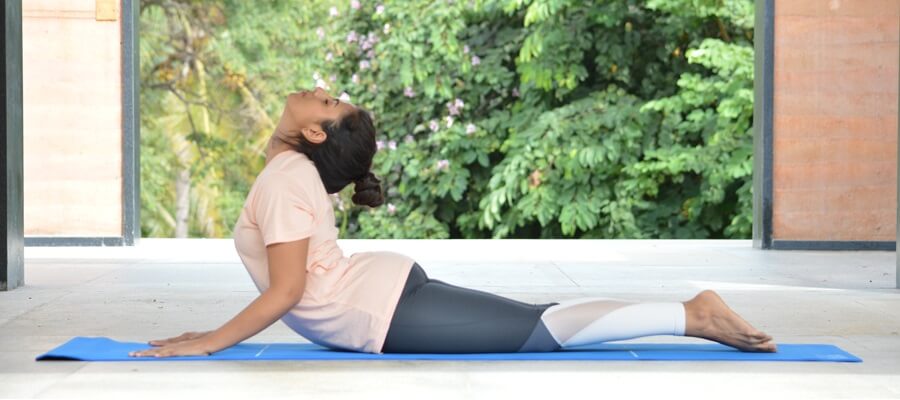
Benefits:
- Strengthens the spine and supporting muscles
- Aids in smoother bowel movements, preventing constipation, which is helpful as tailbone pain can adversely affect bowel movement
Aim: Bend backward as much as you can with your head turned upwards as this can relieve pain from the entire upper part of your body.
Tips:
- Ensure that you bend evenly along the entire length of the spine.
- Support your upper body with your elbows rather than your hands at first, if that is more comfortable for you.
- Raise your body over time with practice.
Quick tips for relief from tailbone pain
- Do not keep sitting in one position for a long time – whether it is in front of your laptop or behind the wheel. Change positions often.
- Use a well-padded seat or a donut-shaped cushion or support when sitting. Avoid hard surfaces like wooden benches and metal chairs as well as narrow surfaces.
- Consider keeping your feet on a low stool to take some pressure off your rear even when sitting.
- Apply hot and cold packs two to three times a day for relief from tailbone pain.
- Avoid heavy physical activity like running and jumping. You can try water aerobics and swimming to help relieve pain in the tailbone.
4. Pawanmuktasana (Wind-Relieving Pose)
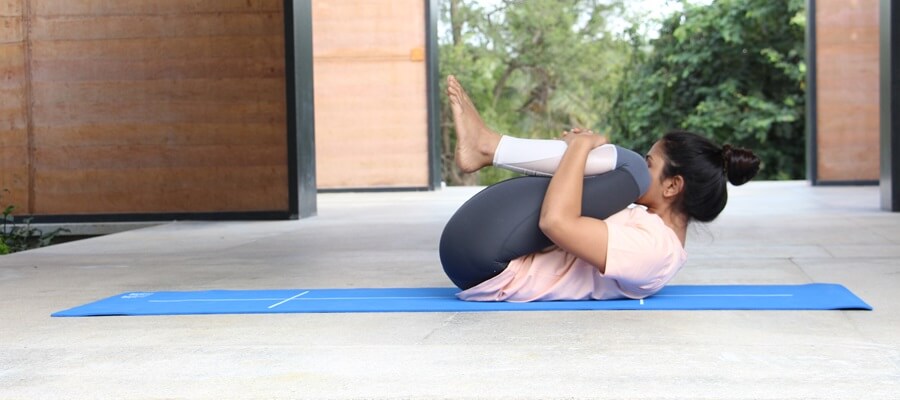
Benefits of Pawanmuktasana.
- Helps flex your back and hip muscles
- Loosens the tightness in the lower back
- Gives temporary relief for the tailbone from supporting body weight
Aim: Maintain the pose for as long as you are comfortable; the bend will relieve weariness .
Tip: If you are not comfortable with this pose, try this variation:
- Lie on your back and straighten your legs with the back of your knees touching the ground. Inhale.
- Exhale and bring your knees (only one knee if that is more comfortable) gently to your chest. Ensure that your back is flat on the ground.
- Hold this pose for 10 seconds while taking slow and deep breaths.
- Exhale and release your legs regaining your original position.
- Repeat 5 times or as you find comfortable.
5. Viparita Salabhasana (Superman Pose)
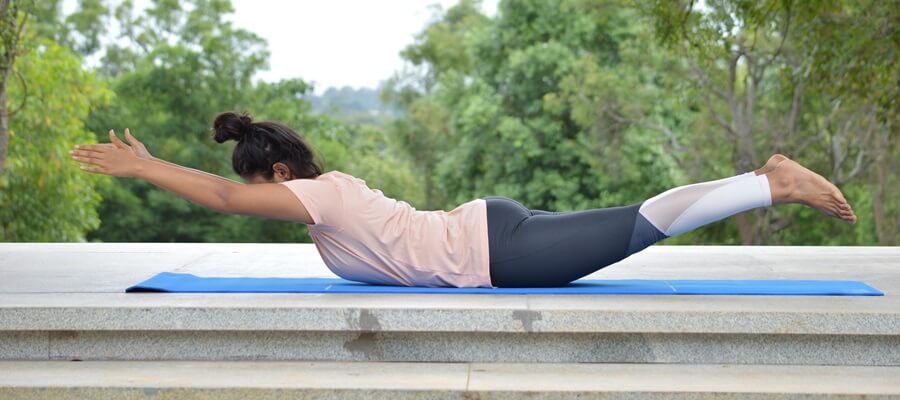
Steps to do Viparita salabhasana.
Benefits:
- Strengthens the pelvic region, relieving tailbone pain
- Strengthens weak back muscles
- Aim: Your head should be in line with your spine – in a neutral position. Maintain the pose for 5 seconds at a time or as you are comfortable.
Tips:
- Ensure your neck is not strained.
- You can start with the Shalabasana (Locust Posture) in case the Superman Pose is strenuous.
6. Setu Bandhasana (Bridge Pose)
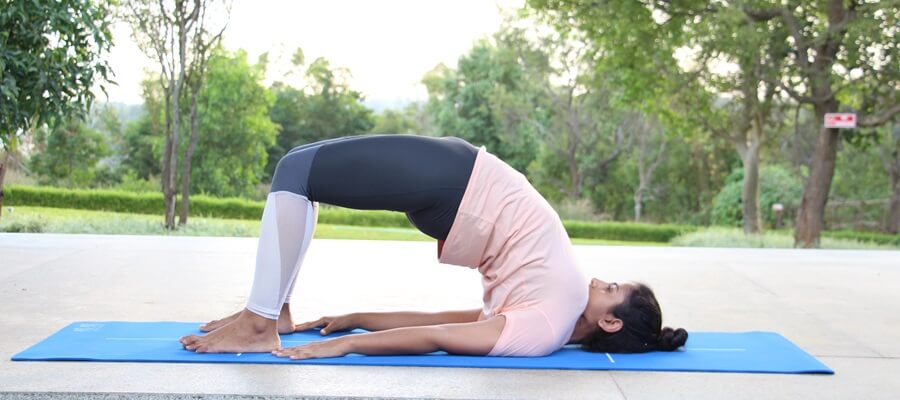
Benefits:
- Strengthens the lower back muscles, enabling it to be a better support to the tailbone in terms of bearing body weight
- Offers temporary relief to the tailbone as weight is taken off it
Aim to do Setu Bandhasana: Align your back, tailbone, and thighs in a straight line and maintain it for about 10 seconds, gradually increasing the length of the pose.
Tip: Support your tailbone region with your hands if that is soothing.
7. Adho Mukha Svanasana (Downward-facing Dog Pose)
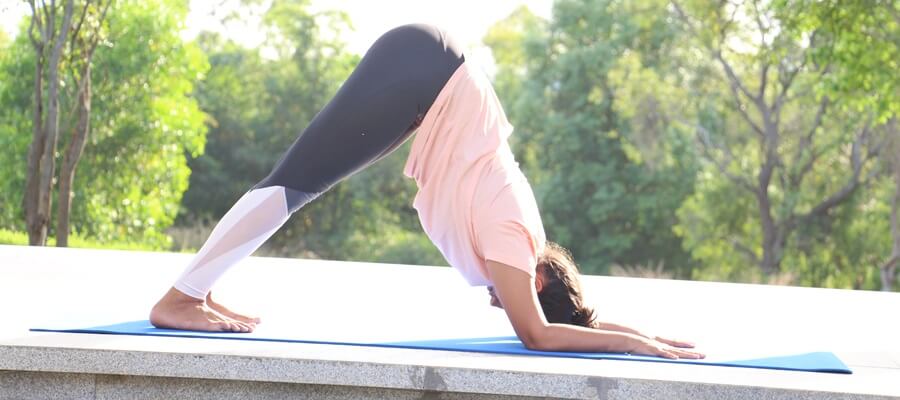
Benefits:
- Strengthens the shoulders, arms, thighs, legs, and spine, making the body better equipped to handle pain
- Makes the back and adjoining muscles more supple, allowing the rear region to get a good stretch
Aim: Press the heels downwards towards the floor, touching it if possible. This will shift weight off the back and tail region relieving it of pain. Know more about Adho mukha svanasana
Tip: Some basic warm-up exercises for the limbs will help you maintain the pose more easily.
Yoga always works best when you follow it up with pranayama and meditation.
Add this simple exercise too!
Donkey kick exercise:
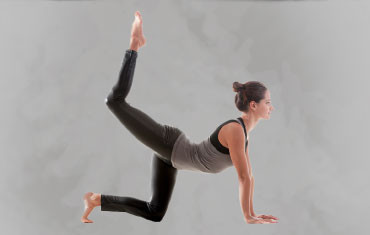
Place your hands and knees on the floor in a quadruped position with your face looking downwards. Exhale and lift your right thigh off the floor with your knees continuing in the bent position. Inhale and bring back to the quadruped position. Repeat this four to five times before moving on to your left thigh. Do not lift your thigh above the level of your torso, as this will put pressure on your lower back by compressing the discs.
These yoga poses will give your body the required stretch, bend, and twist that it has been missing. They must be done seamlessly, allowing your body to stretch effortlessly and comfortably. So, before you look at that pencil you dropped under the table rather wistfully thinking, ‘so near yet so far’, remember to include these asanas in your daily regimen! They will prove to be the savior you were looking for, giving you freedom from tailbone pain.
Would you like to experience the benefits of yoga for yourself? You can join the Sri Sri Yoga program here.
Written with inputs from Pramod Timsinaa, Faculty, Sri Sri School of Yoga
We’d love to hear from you! Leave your comments @artofliving





